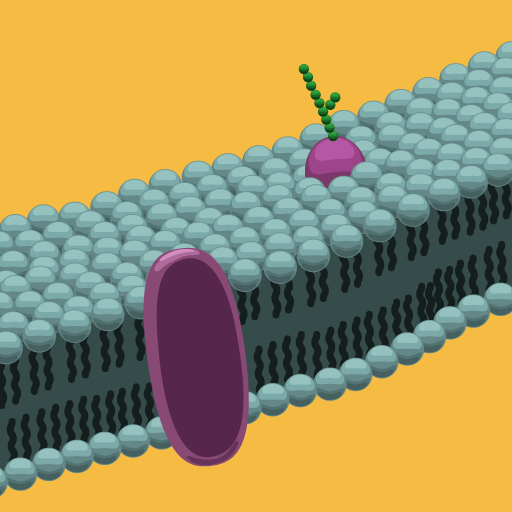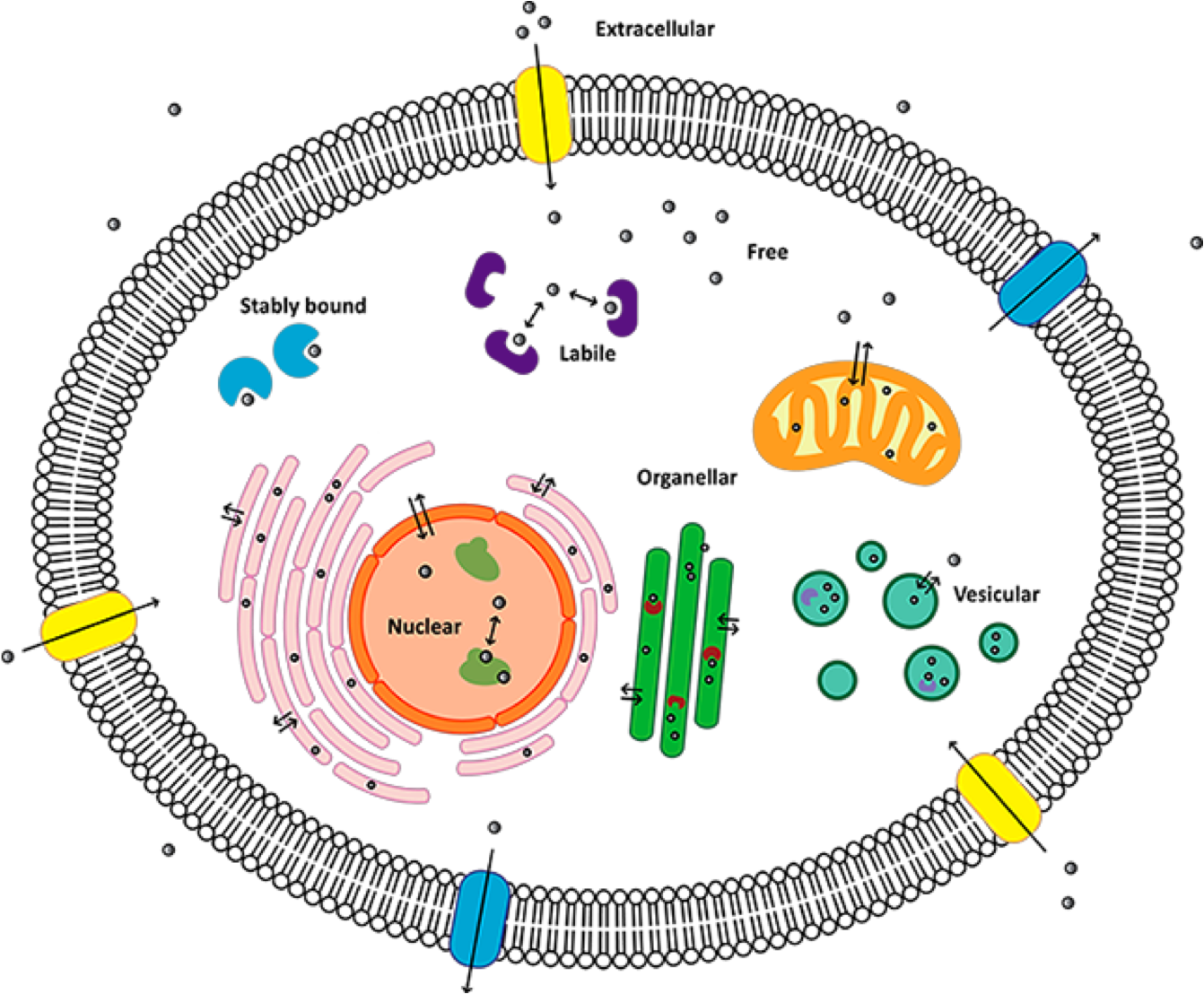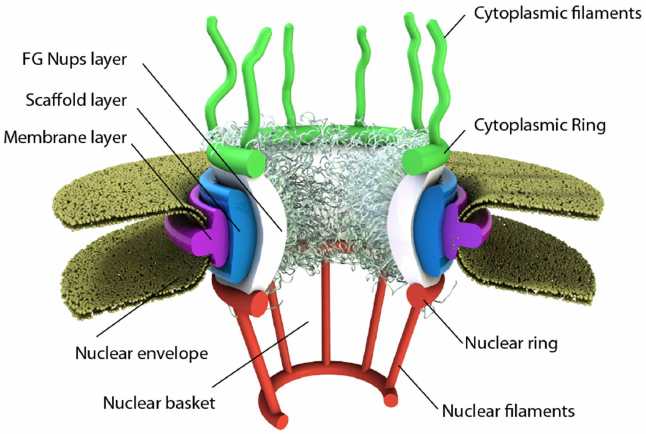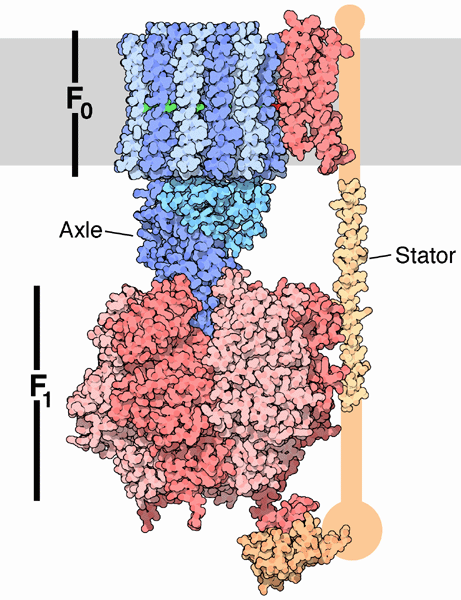Seeing The Hand Of God In More Cell Components
In this article we’ll look at other components within the cell to see the hand of God. That is, we’ll prove God created the first cell and we’ll do that by looking at more cellular building blocks.
At it’s most basic level, every cell in every living organism is made up of four building blocks or components:
Nucleic acids – found in DNA and RNA
- You’ve already seen these in other articles where protein and DNA duplication were discussed
- We’ll have more to say about these components in later articles
Carbohydrates
- Carbohydrates are sugars, starches and cellulose
- Carbohydrates are converted into the energy needed within the cell using a series of multi-step processes
Amino acids
- We’ve discussed these components and their roles in depth in previous articles
Lipids
- Lipids are molecules we typically associate with fats, oils, waxes and even some vitamins
- Examples include cholesterol, triglycerides, and steroids
- In the cell, lipids store energy for later use and make up most of the cell membrane
Here we’ll look more closely at carbohydrates and lipids since the other two building blocks are discussed extensively elsewhere.
Carbohydrates Are More Complex Than Proteins
As noted above, carbohydrates are sugars, starches and other sources of energy. As an animal ingests food, the digestive system converts it into carbohydrate sugars, primarily glucose, which are then transported throughout the body by the bloodstream. Those carbohydrates are converted into energy within the cell and used to power all cell functions.
Recall that proteins are made of amino acids linked together in chains ranging between 50 and 800 units. Carbohydrates molecules can be similarly chained together. Starch and cellulose are examples of this.
In Proof That God Created All Proteins, we saw that two amino acids can each bond at two different sites and produce 3 stable configurations. Carbohydrates are have far more flexibility. In fact, in an article for Reasons To Believe, Dr. Russ Carlson, emeritus technical director of the Center for Plant and Microbial Complex Carbohydrate Research Center, clearly proves that sugars are even more finely tuned than proteins and show even more proof of creation by God.
Sugars can each bond at 5 sites and produce 8 stable configurations. Thus two sugars can produce more than 1,160 different combinations and three can produce more than 100,000 combinations. The number of combinations grows exponentially as the chain gets longer with possible combinations reaching into the millions and beyond for complex sugars.
In each cell, there are hundreds of long, complex chains of sugars. These chains are produced by enzymes using processes somewhat like how amino acid chains are strung together by ribosome micro machines seen in Seeing The Hand Of God In The Cell. And, just as we see in amino acid chains, the type and order of simple sugar molecules strung together is crucial to the ultimate use of each long, complex chain. The probability of such chains coming together, by chance in the early earth, to produce complex sugars needed for cellular functions is zero. Yet these sugars exist, are plentiful in every cell in every living organism and are critical to life. You can read the full article here.
As we see with proteins, long, complex sugar chains show signs of design and being finely tuned for a purpose. There’s no known physics, chemistry or biology that can explain how these elaborate sets of sugar chains started in the early earth. We know from other articles, when we see signs of finely tuned design, that it was created by an intelligent agent. The only intelligence that can create such a design at a molecular level within every cell within every living organism is God.
See The Hand Of God In The Cell Membrane
The fourth critical building block of the cell is called the lipid. As mentioned above, these are fats, oils, waxes and such including some you may have heard of like cholesterol, triglycerides, and steroids. Lipids serve several important functions within a cell but are mostly used to form membranes including the outer cell membrane as well as membranes around important modules withing the cell. The outer cell membrane holds all the components of the cell together so they can interact and perform their functions without being damaged or floating away. Membranes within the cell keep certain parts of a cell separated from other parts so they can perform special functions without interference from the rest of the cell’s components. An example of an separated inner part of the cell is the mitochondria – if you remember your high school biology.
Watch this very short 1 1/2 minute video for a concise overview of a cell membrane and its constituent lipids.

As you watch this video, pay attention to the flexible nature of the membrane including its ability to repair itself and the fact that components move around on it. Pretty cool!
Also, watch how material and signals are passed into and out of the cell by proteins interwoven into the membrane.
Next, watch the first 7 minutes of this more detailed video to see how lipids are used to form membranes in the cell. Pay particular attention to the two layers of lipids used in membranes and how the water-loving parts face both outside and inside. As with other videos, try work get past the technical jargon and understand the core concepts. Feel free to watch the remainder of the video but it gets more technical and less relevant to our discussion here.

Key Conclusions From The First 7 Minutes Of The Video
- The cellular membrane surrounds the cell and contains within it the other cell components and structures – like the nucleus and mitochondria
- A cell floats in water so there’s water outside the membrane and water inside the membrane
- The membrane is mostly made up of lipids but there are also some proteins in the membrane performing specific functions and there are carbohydrates chains performing functions around the membrane
- 5 points about membranes
- Defines the boundary of the cell and protects it
- Provides boundaries for internal parts of the cell – e.g., nucleus & mitochondria
- Organizes complex reactions typically performed by proteins within the membrane
- Regulates flow of information – passing signals to/from other cells
- Has a dynamic structure
- Membranes have two layers formed by lipids continuously aligned together to for sheets
- Lipid combinations are self-forming and form spontaneously with help needed from other components
- They will form a ball with the water-loving parts pointing out and the water-hating parts on the inside
- In a membrane, which has two layers of lipids, water-loving parts of the lipid point both outside and inside while the water-hating parts are on the inside of the membrane structure
- One side of each lipid loves water while the other hates water
More Micro Machines Show The Hand Of God
You might be saying “Okay, great. Thanks for showing me that but why do I need to know so much wonderful biology? I tried to leave all that behind in high school.” The reason is so you can appreciate these next two micro machines and see how God designed and created them for a purpose.
The first micro machine is the “nuclear pore complex“. This is the set of proteins you saw in the videos above that go through the cell membrane. These pore complexes are unique to the membranes that surround the nucleus in the middle of the cell. You also saw them in the protein replication videos in the Seeing The Hand Of God In The Cell article. They were the pores in the membrane that allowed the long string of amino acids (messenger RNA) to leave the nucleus and get folded into a protein by the chaparonin micro machine.

Watch this 4 1/2 minute video on the nuclear pore complex. In particular, watch the full set of micro machines and process steps that enable importing material into the nucleus and the complementary machines and processes that enable exporting material out of the nucleus. Also, keep in mind these are just chemicals coming together to perform all these very specific process steps in a very specific order and with clear purpose.
Why do these chemicals create these processes and such clearly ordered steps? For instance, watch the RAN GTP molecule return to the nucleus once its done its job. Why does it do that? Marvel at how each step displays very clear evidence of design. It’s so amazing if you just think about it for a minute!
The second micro machine enables by lipids and the cell membrane is called “ATP synthase”. ATP is the primary energy molecule that powers all cell functions and ATP synthase is the fancy name for the machine that makes ATP.
Recall from above that carbohydrate sugars like glucose are the primary energy storage units of the cell. However, they are not used to directly power the cell’s functions. Instead, glucose needs to be converted into a different form, called ATP. It is ATP itself that powers cellular processes.
There’s a very elaborate process in and around the cell’s mitochondria that converts glucose into ATP – which also shows clear sign of design and purpose. You can see an overview in this video. We may come back to that topic in the future.
At this point, however, let’s take a closer look at the final step in that process – the step in which ATP is finally created and made ready for “consumption” by other processes in the cell.
Watch this 3 1/2 minute video showing the ATP synthase micro machine. This machine is embedded in the lipid-based membrane surrounding the mitochondria. Marvel at the incredible design of this machine that was clearly created for a purpose. Amazing!

Key Point From The Cell Membrane Micro Machines
There’s no known physics, chemistry or biology that can explain how these elaborate machines and processes started in the early earth. We know from other articles, when we see signs of finely tuned design, that it was created by an intelligent agent. The only intelligence that can create such a design at a molecular level within every cell within every living organism is God.
Conclusion
- Cells have four components or building blocks: nucleic acids, amino acids, carbohydrates and lipids
- Carbohydrates are sugars, starches and other sources of energy that are converted into energy within the cell and used to power all cell functions
- Some carbohydrates are long chains of various sugar and other molecules strung together in complex arrangements similar to the amino acid chains in complex proteins
- The type and order of simple sugar molecules strung together is crucial to the ultimate use of each long, complex chain
- Sugars can bind together and for various configurations so the number of possible configurations reaches into the millions with just a few links in the chain
- The probability of such chains coming together, by chance in the early earth, to produce complex sugars needed for cellular functions is zero
- Long, complex sugar chains show signs of design and being finely tuned for a purpose.
- There’s no known physics, chemistry or biology that can explain how these elaborate sets of sugar chains started in the early earth.
- We know from other articles, when we see signs of finely tuned design, that it was created by an intelligent agent.
- The only intelligence that can create such a design at a molecular level within every cell within every living organism is God.
- Lipids are mostly used in a cell to form membranes including the outer cell membrane as well as membranes around important modules withing the cell
- Membranes hold the components of the cell together protecting them from damaged and from floating away
- Membranes have two layers formed by lipids continuously aligned together to for sheets
- In a membrane, which has two layers of lipids, water-loving parts of the lipid point both outside and inside while the water-hating parts are on the inside of the membrane structure
- Two micro machines display evidence that God designed and created them for a purpose
- The nuclear pore complex is a full set of micro machines and process steps that enable importing material into the nucleus and the complementary set of machines and processes that enable exporting material out of the nucleus
- ATP synthase is a micro machine at the end of an long, elaborate process that converts glucose sugars into the ATP molecule that cell processes use for power
- Both micro machine processes are clear signs of design for a purpose
- There’s no known physics, chemistry or biology that can explain how these elaborate machines and processes started in the early earth
- We know from other articles, when we see signs of finely tuned design, that it was created by an intelligent agent
- The only intelligence that can create such a design at a molecular level within every cell within every living organism is God.



